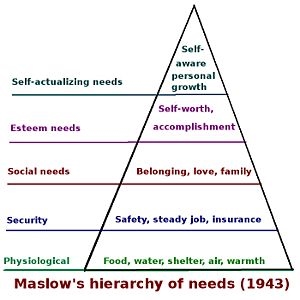 Image via Wikipedia
Image via WikipediaThe benefits of good leadership are numerous. There is a direct correlation to business success and the quality of leadership within the business or organization. In general, businesses with good leadership will have the following traits:
More Productive and Profitable – good leaders are goal focused and achieve greater productivity with the resources provided.
Better Vision – good leaders are able to plan for the future and make better decisions as changing business conditions dictate.
Better Communication Skills – business is essentially about a series of crucial relationships. Customers, potential customers, vendors and employees. Effective and good leaders are able to communicate effectively and efficiently with all parties. Strong relationships allow opportunities to be maximized and problems or challenges to be overcome.
Creativity – the ability to solve problems and work with diverse and challenging people requires creative skills to craft solutions in a timely and efficient manner. Good leaders also allow other team members to engage in a manner that allows for creative solutons for complex or difficult problems.
Accountability and Credibility - good leaders take responsibility for their actions. A good leader knows that to lead others it is imperative that one must first learn to lead him/herself. A good leader will walk the talk. Responsibility mandates accountability or else the result is simple choas.
The benefits of leadership are well known and accepted. The key issue every business or organization must ask is are we developing leaders? The first critical question is can leaders be developed. The answer to this question is relatively simple to answer. List the qualities that are required to be a good leader on a white board or piece of paper. A quick review of these qualities will reveal that virtually all of them are qualities that can be developed. Leadership clearly is a trait or skill that can be developed.
A rather startling realization is that since leadership is a skill that can developed for virtually anyone, who in our business or organization is receiving leadership development. Executive level and managerial level employees in most businesses and organizations receive some type of leadership training or development. How effective is the development or training program. Are a high percentage of the executive’s good leaders? What about the management staff? Good leaders provide many if not most of the results listed above.
Is there a cost to implementing a good leadership development program? Yes there is a cost to create and implement a good leadership development program tailored to deliver the results a given business or organization desires. This can be called the cost of an investment. Successful businesses have found both in-house and out-sourced solutions. Resources that provide excellent leadership development training is not in short supply.
Simultaneously, what is the cost of ineffective or poor leadership? Remember to include in the analysis the lost productivity and revenues. Lost opportunity in terms of relationships with customers, vendors, employees are more difficult to get an exact figure. However, what is the customer retention rate? How many new customers are obtained through referrals from current customers? What is the employee turnover rate? Number of employee related complaints and law suits?
A good leadership development program does have a cost in terms of an investment. Poor or average leadership within a business or organization has a much more substantial cost associated with it that can be determined. Leadership development must be a high priority for any forward thinking successful business or organization. In short, leadership development is something that every business or organization will need in order to achieve success.
Why invest in leadership development? Because Leadership Development is a business necessity! Please feel free to visit my website or contact me directly for more information at 847/541-5299.
Look for a future blog article on the importance of developing leadership skills for non-management staff. They are the likely the future managers! They have direct contact with the customers! Productivity and revenue generation is due in significant part to their effectiveness. Leadership development just makes great business sense.










